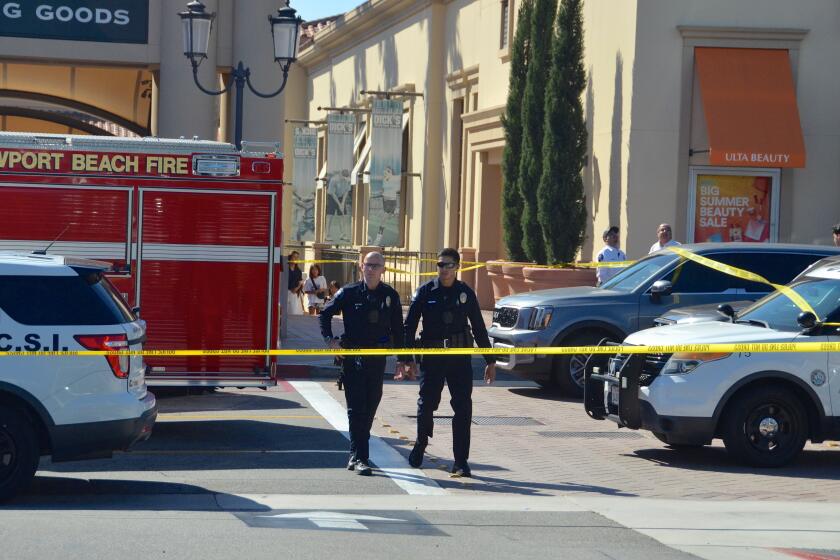Apodaca: Feeling disconnected? You’re not alone

We tend to think of loneliness as a sad, forlorn condition. But what we sometimes overlook is that it can also be dangerous.
Particularly now. Healthcare professionals are increasingly warning that loneliness has reached epidemic levels throughout the nation. And though we might be tempted to dismiss such pronouncements as hyperbole or underestimate the consequences, a closer examination reveals that loneliness is actually a serious health issue.
What’s going on, and why are medical and mental-health experts so worried?
Their concern stems from the fact that socialization is a basic human need; indeed, we are biologically wired for social connection. It’s as fundamental a part of our health as breathing and eating. That was true in the age of hunter-gatherers, when people had to work together for their survival, and it remains so in our complex modern society.
But for some time now, evidence has accumulated that shows we are struggling to maintain healthy relationships.
A 2022 study, for example, found that only 39% of American adults felt very connected to others emotionally.
The American Psychiatric Assn. earlier this year reported that about one-third of U.S. adults said they feel lonely at least once a week. One in 10 Americans say they feel lonely every day.
And while we have traditionally characterized loneliness as a condition that largely afflicts older people, the APA’s research found that younger Americans were quite susceptible. About 30% of study respondents aged 18 to 34 reported feeling lonely every day or several times a week.
Studies have also shown that over the past 20 years or so, the amount of time that people spend alone has ratcheted up, while the time spent on in-person social engagements and the number of close friendships that people maintain have both declined.
The biggest alarm bell was sounded last year when U.S. Surgeon General Dr. Vivek Murthy issued a lengthy, detailed report in which he acknowledged that he had initially been skeptical about the depth of the problem, but after delving into the issue he had become convinced that we are experiencing a public health crisis of loneliness, isolation and lack of connection.
Daily Pilot columnist Patrice Apodaca was leaving a leisurely visit to Fashion Island when a stranger warned her of a shooter nearby. The incident resulted in the death by vehicle of a woman visiting from New Zealand.
In the report, Murthy warned that loneliness increases the risk of cardiovascular disease, dementia, stroke, depression, anxiety and premature death. The health risks are so dire, he said, that they are comparable to smoking up to 15 cigarettes daily.
There are other costs as well, he noted. Loneliness exacts a heavy toll on the healthcare system, work performance, economic growth and academic achievement.
Many mental-health professionals reacted to the Surgeon General’s report with relief and feelings of validation, saying that it was an important step toward recognizing a serious problem that they have been witnessing in their own work.
“We definitely have a significant problem with loneliness going on in society, both kids and their parents,” said Dr. Jerry Weichman a clinical psychologist and adolescent health specialist at Hoag Hospital’s Pickup Family Neurosciences Institute in Newport Beach.
Our social circles and socialization skills diminished during the COVID-19 pandemic, and they still haven’t recovered, Weichman noted. He has observed many people suffering what can loosely be described as a low-grade depression stemming from a chronic lack of connectedness.
But even without COVID in the mix, he said, the loneliness problem would still be significant, due to a host of other contributing factors, including less family time, greater political and social polarization and stress over existential issues such as climate change.
Possibly the biggest causal factor, experts say, is technology and social media.
“What you have is a society that has grown up that is distracted and not connected,” Weichman said. “Teens are not looking at each other. They’re looking at their phones. They’re missing interpersonal connectedness.”
“COVID only exacerbated these symptoms,” said Dr. Sina Safahieh, a psychiatrist and director of the ASPIRE and Young Adult Mental Health Programs at Hoag. “Now, in post-COVID some of those teens are stuck behind those screens more than ever.”
What can we do?
Weichman said that with growing awareness should come an effort to refocus on basic social skills such as greeting others in a friendly manner, smiling and making eye contact, and to recognize that true purpose and meaning in life comes from connecting with and being of service to other people.
There are also larger, societal changes that should be encouraged, said Safahieh.
“We’re going to have to strengthen social infrastructure,” he said. This would include creating more physical spaces and developing organizations and programs that promote healthy, in-person social interaction.
Safahieh also favors increased regulation of technology companies to address the addictive features of online networks and social media, which are intentionally designed to keep users hooked and inhibit people from relating to each other in more meaningful, positive ways.
On an individual level, we can recognize that we need each other. Parents can prioritize family time and model positive social relationships for their children. We can learn to spot the signs of too much isolation, in ourselves and others. And we can put down our phones, get out of our silos and look for healthy ways to connect with others.
Loneliness isn’t good for anyone. The better news is that, with some effort, it can be cured.
All the latest on Orange County from Orange County.
Get our free TimesOC newsletter.
You may occasionally receive promotional content from the Daily Pilot.





